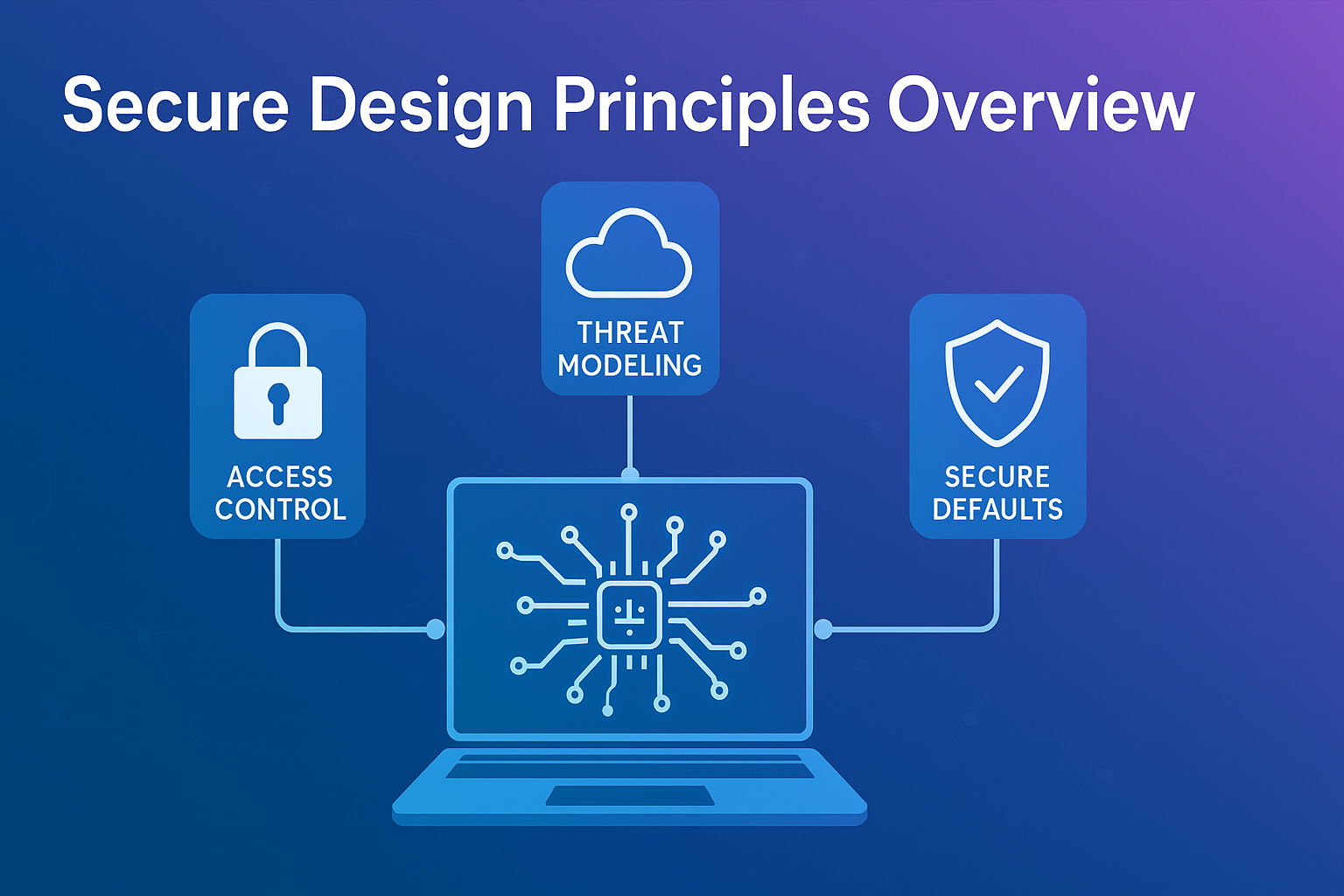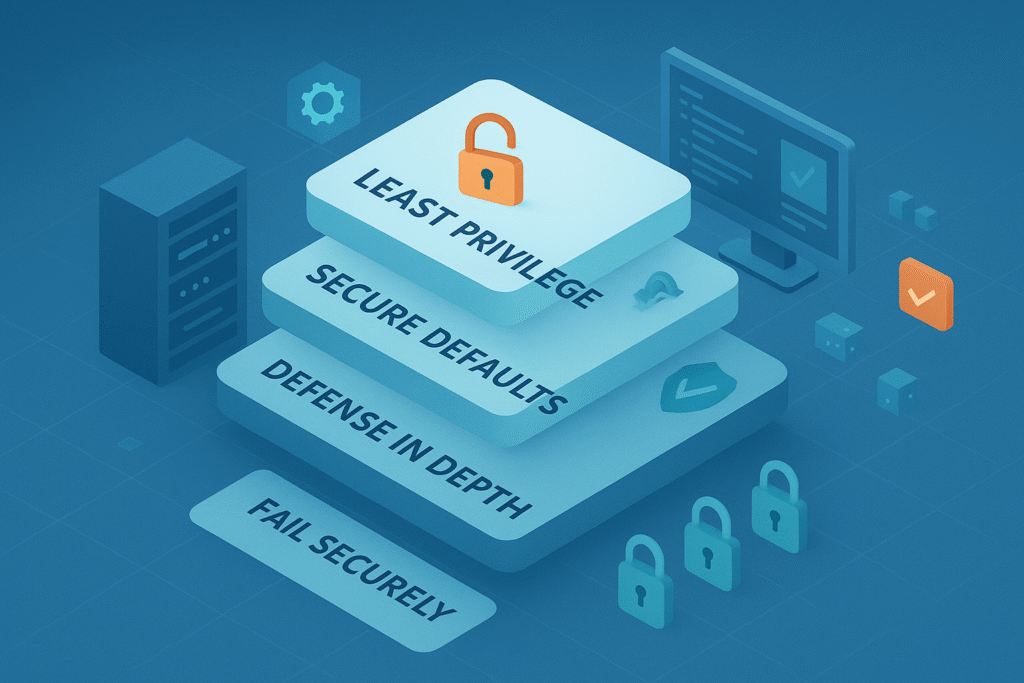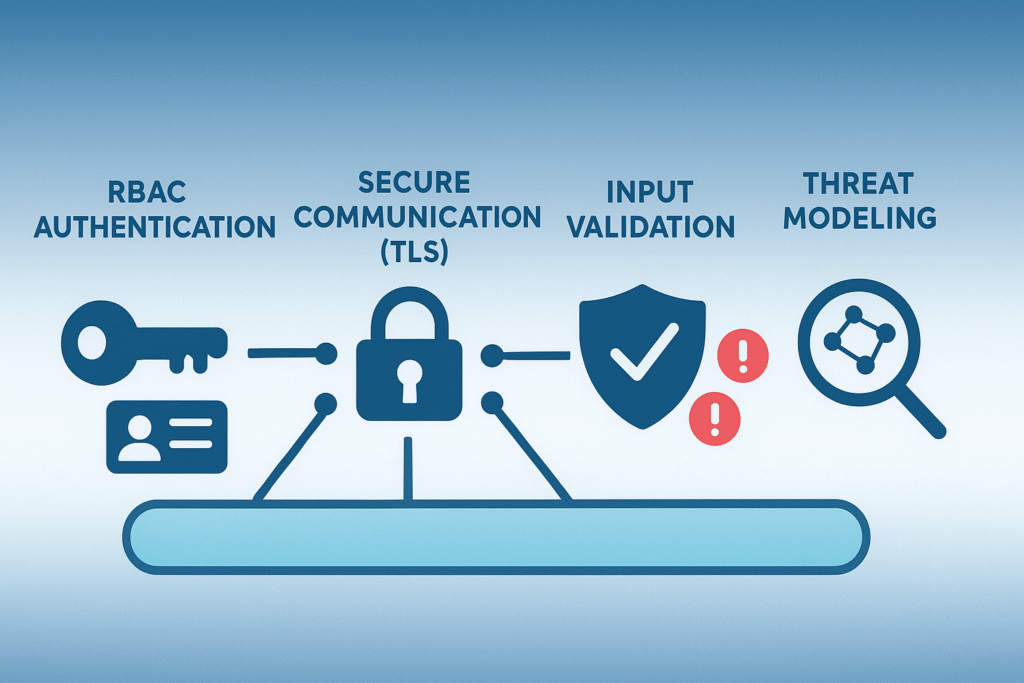
Security means life or death for software. Through years of teaching developers at our bootcamp, we’ve seen how proper security foundations prevent disasters before they strike. Good code starts with defense in mind, a mindset that protects users and their data from day one.
Anyone building software needs to grasp these core concepts. The right security approach acts like a shield, not an afterthought bolted on at the end. Smart developers know threats evolve fast, so continuous learning matters. Ready to master the building blocks of secure development? Let’s explore the principles that separate robust systems from vulnerable ones.
Key Takeaways
- Secure coding practices form the foundation of secure design by embedding safety from the start.
- Core principles like least privilege, fail-safe defaults, and defense in depth reduce vulnerabilities effectively.
- Frameworks such as OWASP’s secure design checklist offer practical steps to review and improve your architecture.
What Are Secure Design Principles and Why Do They Matter?
Secure design principles are guidelines that help software creators embed security early in development. They’re about anticipating threats, reducing mistakes, and making systems resilient. We’ve found that when these principles are embraced as part of the secure development lifecycle, the whole team benefits, fewer patches, less firefighting, and more confidence in what’s delivered. It also helps teams stay aligned with structured security principles that reinforce a consistent mindset across projects.
Why should you care? Well, security breaches cost enormous amounts. Studies show that fixing a vulnerability after release can cost roughly 30× as much as catching it during development, and in some cases up to 100× more. (1) That’s a staggering difference. Secure software design cuts down those risks, making the effort upfront pay off in saved time, money, and reputation.
To put it simply, secure design is about minimizing chances for attackers to exploit your system, while maximizing your control over who does what inside it.
Core Secure Design Principles Explained
Credits: Skillset
Principle of Least Privilege
This principle means giving users and processes only the access they absolutely need. We use this mindset in our code. When a script or user can’t do more than necessary, any breach causes less damage. This limits the attack surface because fewer permissions mean fewer ways to misuse the system.
For example, in a web app, a guest user might only view content, while an admin can change settings. Scripts that handle data run with restricted rights too. This avoids situations where a stolen account can wreak havoc beyond its role.
Principle of Economy of Mechanism
Economy of mechanism urges minimal and simple designs, since complexity often hides vulnerabilities. (2) When you pile on features and interactions, it’s easier for bugs to hide. Economy of mechanism urges developers to build straightforward, minimal security controls.
Complexity can be a security risk because every extra component is a new point of failure. So, streamlining means fewer chances attackers can exploit overlooked gaps.
Principle of Fail-Safe Defaults
Systems should deny access by default, granting it only when explicitly allowed. It sounds obvious, but many setups slip here and leave things open unintentionally.
For instance, a default admin password or open ports on a server can invite trouble. We remember a case where a default configuration exposed sensitive files because the system granted read access unless changed. Fail-safe defaults prevent such accidents by starting locked down.
Principle of Complete Mediation
Every request to access resources must be checked. Think of it like a club bouncer who checks IDs at every door, not just once. This principle ensures no one bypasses security checks.
If an attacker finds a way around a check, they can exploit that gap repeatedly. Complete mediation forces verification every time, making sure only authorized actions happen.
Principle of Open Design
Security should not depend on secrecy of the design itself. We believe transparency helps. When designs are open to review, experts can spot weaknesses and suggest fixes. Keeping security through obscurity is a fragile strategy.
Peer reviews and audits become possible when the design’s open, improving trust and robustness. Open design invites collaboration rather than hiding behind closed doors.
Principle of Separation of Duties
Splitting critical tasks among different people or systems prevents any single person from having too much power. Adopting separation of duties in development processes helps mitigate insider threats and errors, especially in sensitive operations where fraud risks are high.
For example, in banking software, one team member initiates a transaction, while another must approve it. This division limits insider threats and errors by requiring multiple checks.
Defense in Depth
Defence in depth means layering multiple security controls so if one fails, others still act — but it does not replace the need for solid foundational controls.
Some common layers include:
- Firewalls to block unauthorized access
- Intrusion detection systems to alert on suspicious behavior
- Data encryption for confidentiality
- Multi-factor authentication to strengthen login security
These overlapping defenses create resilience and reduce single points of failure.
OWASP Secure Design Principles and Frameworks
OWASP Overview
OWASP is a global leader promoting secure coding and design. Their principles align closely with what we practice, emphasizing security integration early on in software architecture. This is why many teams reflect on the broader secure design approaches when shaping their architecture decisions.
Key OWASP Principles

Here’s a quick look at important ones:
- Least privilege and separation of duties limit access and prevent fraud.
- Secure defaults ensure systems start locked down.
- Open design allows for transparency and peer review.
- Defense in depth layers multiple protections.
- Fail securely means systems fail without exposing data.
- Economy of mechanism promotes simplicity.
- Security as code automates checks.
- Data protection and privacy by design embed privacy early.
OWASP Secure-by-Design Framework
OWASP provides a checklist for teams to review their work, best practices for secure coding, reusable design patterns, and reference architectures. These help catch gaps before code goes live.
The checklist includes:
- Verifying access controls are implemented correctly.
- Checking secure default settings.
- Ensuring fail-safe behaviors cover edge cases.
- Confirming threats are identified and mitigated.
- Using audited security patterns consistently.
Applying Secure Design Patterns

Authentication and Authorization Patterns
Role-Based Access Control (RBAC) is a common pattern. It assigns users roles with specific permissions. We find RBAC straightforward to implement and manage — making sure users only do what they should.
Secure Communication Patterns
Encryption and secure protocols like TLS protect data in transit. We always push for these because intercepting unencrypted data is one of the easiest attack vectors.
Error Handling and Logging
Logging is necessary, but if logs reveal sensitive data, they become a liability. We make sure error messages are generic and logs avoid exposing secrets.
Input Validation and Sanitization
Preventing injection attacks means never trusting user input. Validating and sanitizing inputs stops attackers from slipping malicious commands.
Threat Modeling
By anticipating attack paths early, threat modeling helps us design countermeasures before writing code. Threat modeling is a key step that helps teams think like attackers, design countermeasures ahead of time, and prioritize security controls based on risk and attack surface during early development phases. It’s like mapping out weak spots in a fortress before building walls.
Secure-by-Design Methodology

Integrating Threat Modeling and Risk Assessment
Starting with threat modeling means understanding risks upfront. We embed this in design discussions to prioritize security controls effectively, ensuring a proactive approach to security that aligns well with continuous risk assessment throughout the software lifecycle.
This mindset is central to integrating security design early, where security isn’t an afterthought but a fundamental part of the blueprint guiding every development phase.
Automating Security Checks
Automated tools running during CI/CD pipelines catch issues quickly. We rely on this to maintain continuous security without slowing development.
Using Secure Defaults and Minimizing Attack Surface
We configure systems to be secure out of the box and remove unnecessary features that expand the attack surface.
Continuous Monitoring, Testing, and Updates
Security isn’t a one-time task. Ongoing monitoring and patching keep systems resilient against emerging threats.
Security Privacy by Design
Embedding Privacy-Enhancing Measures
- Data minimization reduces the amount of personal information collected.
- Anonymization removes identifying details.
- Secure data handling ensures proper storage and access controls.
These measures build user trust and help comply with regulations.
Cost-Effectiveness of Secure Design
Fixing security flaws early is far cheaper than after release. We’ve seen firsthand how reworking designs mid-project can derail timelines and budgets. Investing in secure design upfront saves headaches and money later.
An IBM study puts it bluntly: vulnerabilities fixed after release can cost 30 times more.
Secure Design Review Checklist

To keep security on track, use checklists that verify:
- Proper access controls are in place.
- Defaults are secure.
- Fail-safe behaviors are effective.
- Threats have been comprehensively covered.
- Audited security patterns are consistently applied.
OWASP’s checklist is a great resource.
Examples of Secure Design Architectures
Layered controls create a strong defense:
- Trusted execution environments isolate sensitive operations.
- Network segmentation limits damage spread.
- Data encryption protects confidentiality.
- Redundancy ensures availability.
- Secure authentication and session management guard user access.
FAQ
What is a “secure design principles overview” and why should I care?
A secure design principles overview gives you a simple map of how to build software with safety in mind from the start. It invites you to shift from “add-security later” to “design-security now.” By understanding it, you’ll know core ideas like least privilege and defense in depth and make fewer costly mistakes.
How can I practice secure coding practices when starting a project?
Begin by making secure coding practices part of your workflow: treat every input as untrusted, validate everything, and limit permissions early. Use the overview of secure design principles to guide you. This habit makes it much easier to embed security rather than retrofitting it at the end.
What do frameworks like OWASP’s secure design checklist add to the process?
Frameworks such as OWASP’s secure design checklist give you ready-made questions and guidelines to review your design and architecture. They take the secure design principles overview from theory into actionable steps. Instead of guessing what is missing, you check against known controls and patterns.
When should I apply the principle of defense in depth, and how does it complement other principles?
Use the principle of defense in depth throughout architecture: it means layering controls so if one fails, another still catches threats. In your secure design principles overview you consider layering alongside least privilege, fail-safe defaults, open design, etc. They all work together, not independently, to build a resilient system.
How do I keep security mindset alive after deployment using the secure design principles overview?
Security doesn’t end when you launch. The secure design principles overview reminds you to monitor, test, update, and review your system regularly. Make secure design part of your team’s habits: threat-model future changes, automate checks, review logs, not just ONE time, but continuously.
Conclusion
We’ve walked through the main pillars of secure design, showing how they interconnect to build safer software. Starting with secure coding practices puts you on the right path, but layering in principles like least privilege and defense in depth completes the picture. OWASP’s frameworks and checklists provide practical tools to keep teams aligned.
What matters most is making security a habit, part of the design conversation and every step of development. That way, software isn’t just functional; it’s resilient against the threats waiting out there.
Ready to take the next step? Join the Secure Coding Practices Bootcamp to turn these principles into hands-on skills. Learn directly from experts, practice with real-world labs, and start building secure, resilient software from day one.
References
- https://blog.testthetest.com/p/the-true-cost-of-software-bugs
- https://nocomplexity.com/documents/securityarchitecture/architecture/saltzer_designprinciples.html

